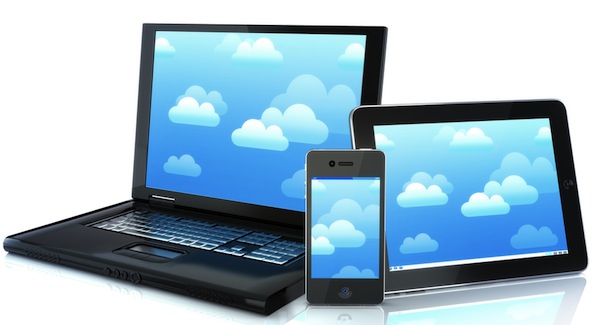Wishing Windows well in its new role

"The era of PC dominance with Windows as the single platform will be replaced with a post-PC era where Windows is one of a variety of environments that IT will need to support", Van Baker, Gartner research vice president, says. The days of Windows as the applications and device hub are over.
The implications are huge for businesses, which must adapt to something else, too. While native mobile apps are all the rage today, their future is uncertain. Gartner forecasts that by 2016, more than half of those deployed will be hybrid, and that's good for any platform favoring HTML5, including Windows.
Post-PC is a Lie
Baker and I disagree on one important point, however. There is no post-PC era. It's a fiction perpetrated by Apple cofounder Steve Jobs, who when alive wanted to sell more devices, and for analysts like Baker who want clients to buy more reports and services. We have entered the contextual cloud computing era, where context and not device or location determines tech's usage.
Context isn't new in business computing, but accelerates because of cloud benefits. BlackBerries, laptops and PDAs -- going back into the last century -- were contextual devices around which employees commingled behavior and data. The trend simply accelerates, as consumers purchase more devices and bring them to work. Employees have more choices, not just Windows PCs, and for tech all the more personal.
In this rapidly evolving future, where the cloud makes content and data available anywhere, anytime and on anything, context is king. There is no post-PC, rather the personal computer changes roles, being one of many platforms. During the transition, platform creators and developers emphasized apps, like they did for the PC -- and many are native. But that's not a sustainable approach because of contextual demands -- your professional or personal stuff available on anything. Developers make do by creating apps for each platform, which isn't a sustainably sound strategic approach going forward. There is too much investment in too many places.
As businesses support more devices, they should add them to existing applications and platforms, rather than supporting them separately, Gartner recommends. That's actually good for Windows' longevity, being the incumbent and because of development priorities Microsoft made for the current desktop and server platforms. Windows 8's Modern UI is all about active content, and developers using HTML5, JavaScript and native code to write apps and to support connected services.
BYOD Jungle
"The BYOD trend and the increased pressure on organizations to deploy mobile applications to accommodate mobile work styles of employees will lead businesses to manage a portfolio of mobile application architectures", Baker says, "and hybrid architectures will be especially well-suited to business-to-employee applications".
HTML5's role cannot be understated. "While hybrid apps will be the majority of enterprise mobile apps, web technologies like HTML5 will make up the most commonly used languages for building mobile applications by 2015", David Mitchell Smith, Gartner vice president, predicts.
That's good for cross-platform development, which is more sensible when supporting so many devices -- everything from legacy Windows to mobile operating systems like Android, BlackBerry, iOS or Windows Phone.
Where Windows sits on the enterprise will greatly affect many IT developers' choices about what to invest in and where. Those decisions aren't easy because adoption of other devices is an accelerating trend.
As I explained three years ago: "Mobile device-to-cloud competition's shifting relevance bears striking similarities to the move from mainframes to PCs, and it is a long, ongoing trend. Microsoft's newer problem is sudden and unexpected: Competing operating systems moving up from smartphones to PCs or PC-like devices".
Out with the Old
Looking at past historical trends, the pace is slow at first reaching a crescendo, where there is a dramatic shift to the new from the old occurring within a short time span. Some older technologies continue for a time and disappear, while many others remain but in new niches. Some recent, and not-too-hard-to-grasp, examples:
- Cottage industries and factories
- Horse drawn carriages and trains
- Trains and automobiles
- Telegraphs and telephones
- Mainframes and PCs
- Digital music downloads and CDs
We're at the accelerating end now, where much changes fast in a short time. For example, between October and March surveys, Twitter usage dramatically shifted, according to Strategy Analytics. On laptops, the number dropped to 64 percent from 77 percent, while on smartphones and tablets rose to 71 percent from 65 percent.
"The immediacy of Twitter communications requires devices which are close to hand at every waking moment," David Mercer, Strategy Analytics vice president, says. "By definition this suggests mobile phones and tablets should be preferred devices for Tweeting and the survey evidence points clearly in this direction".
Twitter, like many other cloud apps and services, is highly contextual and personal. Business mobile apps will be increasingly so as organizations establish sound policies about devices used for home and work purposes and maximize their benefits.
Again, the trend accelerates. Signs are everywhere. Many IT organizations may find their businesses on the short end of the curve and using BYOD as means of making do while catching up. But decisions they make in process, about Windows' role and supporting and managing new platforms, matter now. It's one reason to anticipate hybrid mobile apps, at least in the short term.
As for Windows, it's changing role is inevitable now. The question to be answered: What will be Windows new role in a one-of-many world?
Photo Credit: Digital Storm/Shutterstock
